Up close with the 2022 Hyundai Ioniq 5 EV: Meshing old and new has never looked this good
We got our first chance to get up close to the 2022 Hyundai Ioniq 5 last week in Orange County, Calif., right next to Hyundai’s offices, and it did not disappoint.
Pictures and press releases don’t do this vehicle justice, it’s going to have a unique presence on the road and it serves as a worthy introduction for Hyundai’s new all-electric sub-brand.
It also displayed the potential the new architecture has, with a spacious interior and a layout that is as flexible as that of any compact crossover on sale today.
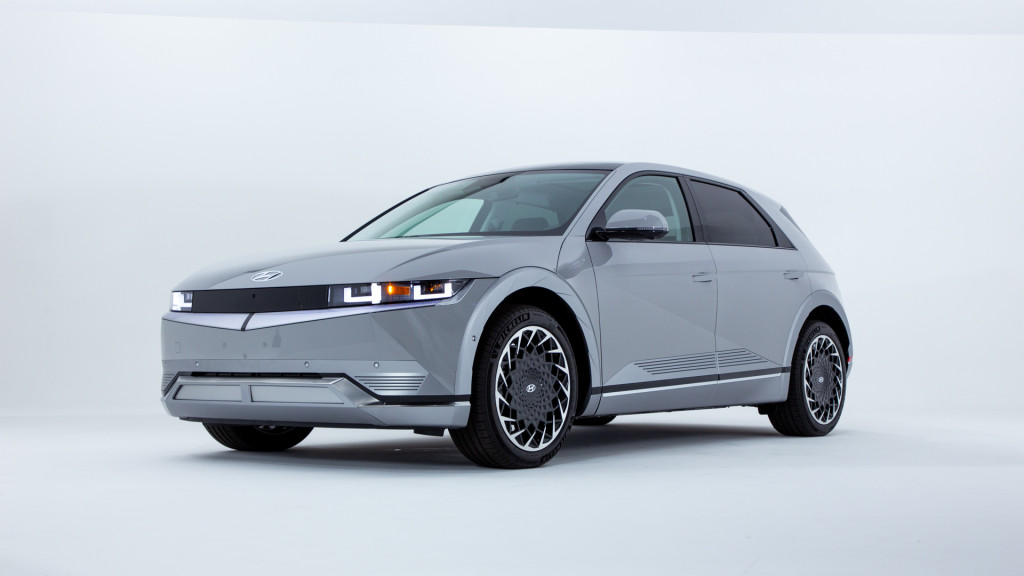
2022 Hyundai Ioniq 5
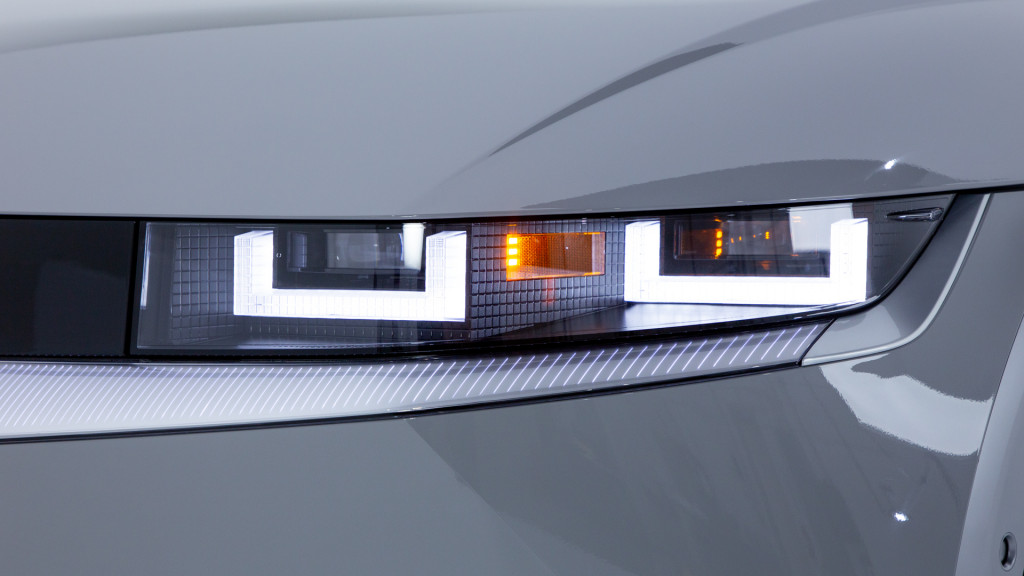
2022 Hyundai Ioniq 5
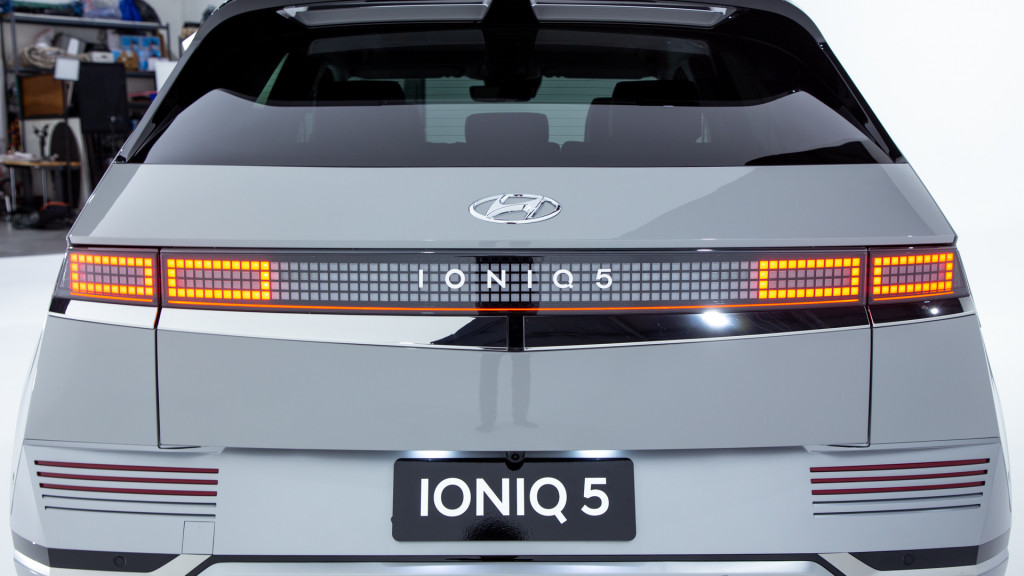
2022 Hyundai Ioniq 5
Styling success
The Ioniq 5’s distinct styling hews closely to the 45 prototype that we saw a few years ago, it’s a head-turning design that is retro-futuristic in the best way. Seeing it for the first time in the studio was a big “wow” moment, it actually stopped me in my tracks. If it was Hyundai’s intent to make the Ioniq 5 look truly distinct, not only from its other vehicles but from the rest of the growing battery electric crossover field, it has succeeded tremendously.
For an ’80s baby like myself, the pixelated accents found on the exterior hit all the right 8-bit notes. The detailing found in the headlights and taillights makes them impressive showpieces; take a close look at the LED daytime running lights and you see individual LED elements forming those boxes and even the plastic housing around them has like-sized squares that bring the whole design together.
The taillights have been slightly modified from the concept, but I think the change is for the better. Not all of those squares are individual LED elements, but those that are look exactly the same from a distance and give the whole bar a uniform look and feel.
The Ioniq 5 also has active flaps front and rear for better aerodynamics, the first time rear flaps have been used on Hyundai.
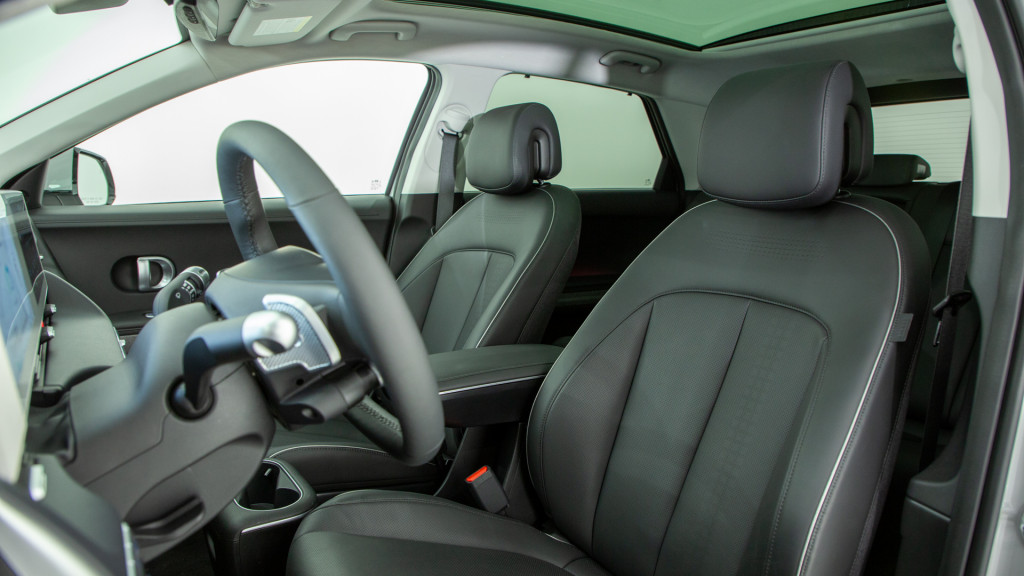
2022 Hyundai Ioniq 5
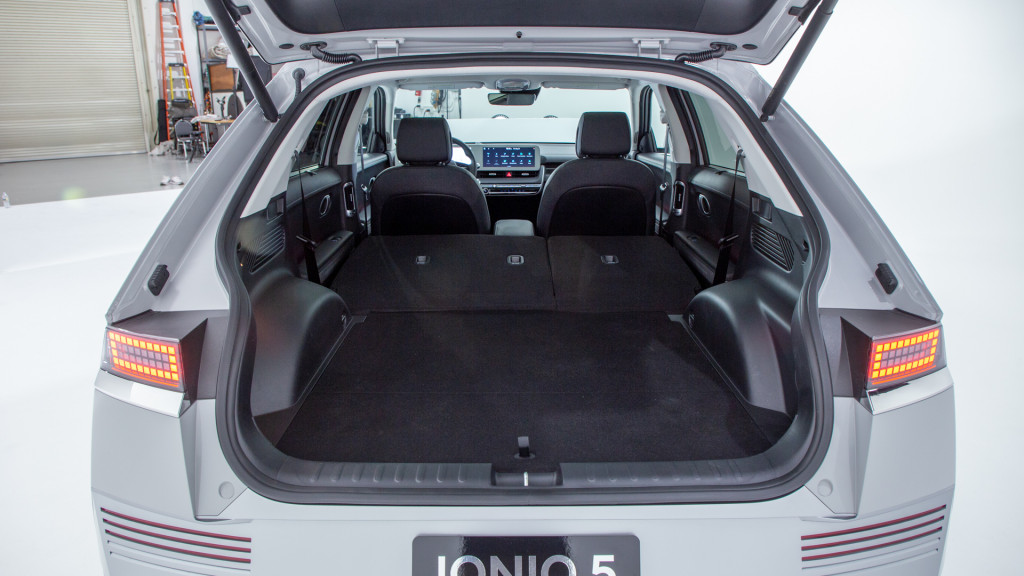
2022 Hyundai Ioniq 5
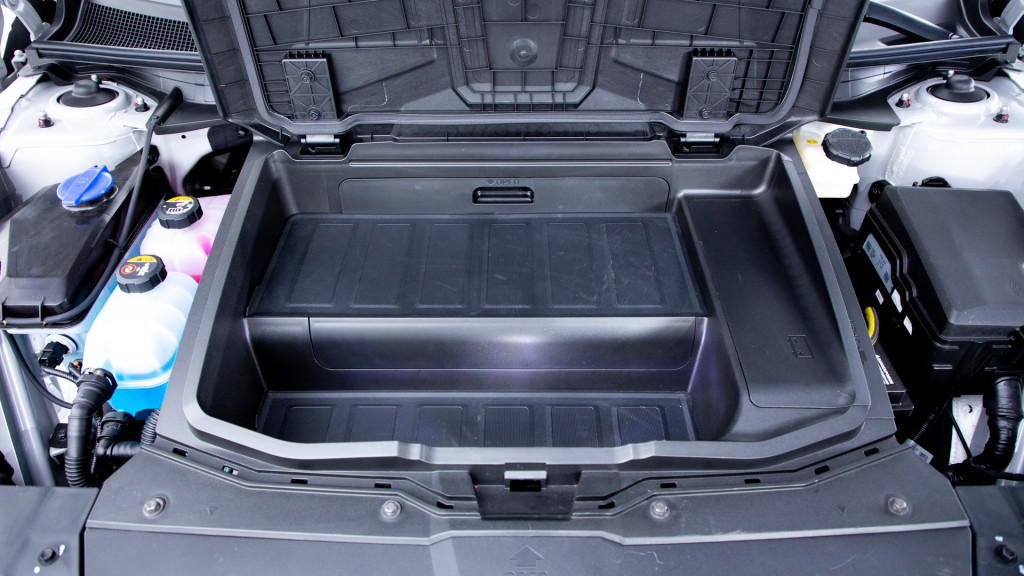
2022 Hyundai Ioniq 5
Size is right
Though originally insistent that the Ioniq 5 was a passenger car, Hyundai has shifted its stance and is now calling it a compact crossover along the lines of the Volkswagen ID.4 and Ford Mustang Mach-E. This designation makes sense given its dimensions and cargo capacity, at 63.0-inches tall it actually matches the Mach-E exactly. But seeing it in person, it looks decidedly more car-like than those other two vehicles.
One of the specs that Hyundai loves to cite is that the Ioniq 5’s wheelbase is almost four inches longer than the Palisade three-row SUV, though overall length is 14-inches shorter. This allows the cabin to be stretched out and the Ioniq 5 feels very roomy inside for both front and rear passengers. The backseat can slide forward and back 5.3 inches to open up more cargo room or passenger room as needed. Even the rear middle position feels usable, thanks to the flat bottom floor.
The proliferation of these flat bottom floors is a welcome trend. It makes the entire package feel more cohesive and allows for elements like the Ioniq 5’s sliding center console. I don’t think the automakers have figured out how to fully utilize this capability yet; the only reason that Hyundai cites for the console movement is for the driver to easily climb out of the other side of the car in a tight parking spaces, and the console doesn’t move back far enough for rear seat passengers to use (not sure why they would). But given time, we’re hoping to see creativity win out with these more modular spaces.
Cargo room is measured at 27.2 cubic feet behind the rear seats and 59.3 cubic feet with them folded. That puts the Ioniq 5 close behind both the Mach-E (29.7/59.7 cubic feet) and ID.4 (30.3/64.2 cubic feet). Don’t count on the Ioniq 5’s frunk to store anything, however; all-wheel drive models like the prototype that was shown have only 0.8 cubic feet of cargo room up there, in a plastic bin that sits atop other equipment. It won’t fit a bag or any real cargo, just some towels or other small items that can lay flat.
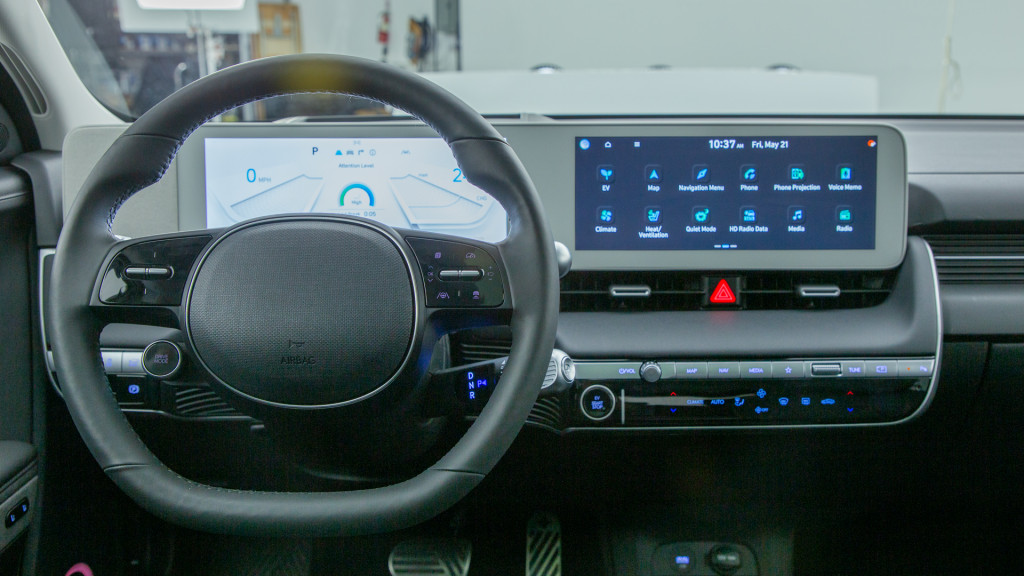
2022 Hyundai Ioniq 5
Display disconnect
The Ioniq 5 opts for the side-by-side screen setup that’s going to be familiar to anyone who’s been in a Mercedes-Benz recently, with both screens measuring an identical 12.0 inches. There’s some disconnect between the two screens. The driver display is new and fresh with a white theme that matches the lightened bezel around the screen, but the multimedia screen has a black theme.
Being in such close proximity, the screens clash. Neither screen’s theme can be changed either, so one will always be white and the other black. This also means that there won’t be wireless Apple CarPlay, as Hyundai for reasons not disclosed only offers it on its smaller 8.0-inch screen. Opting for a tried-and-true setup is a positive in some ways, this is better than slapping in a laggy and unfinished interface like the ID.4 has. But it feels like a missed opportunity for Hyundai to try something new on this front to at least match the futuristic feel of the rest of the vehicle.
The Ioniq 5 really stands out in person, it’s going to make a large impression when seen on the road. As the first EV out of this initiative, Hyundai’s big swing on styling seems to have connected and I can’t wait to see what it does with the forthcoming Ioniq 6 and 7.

